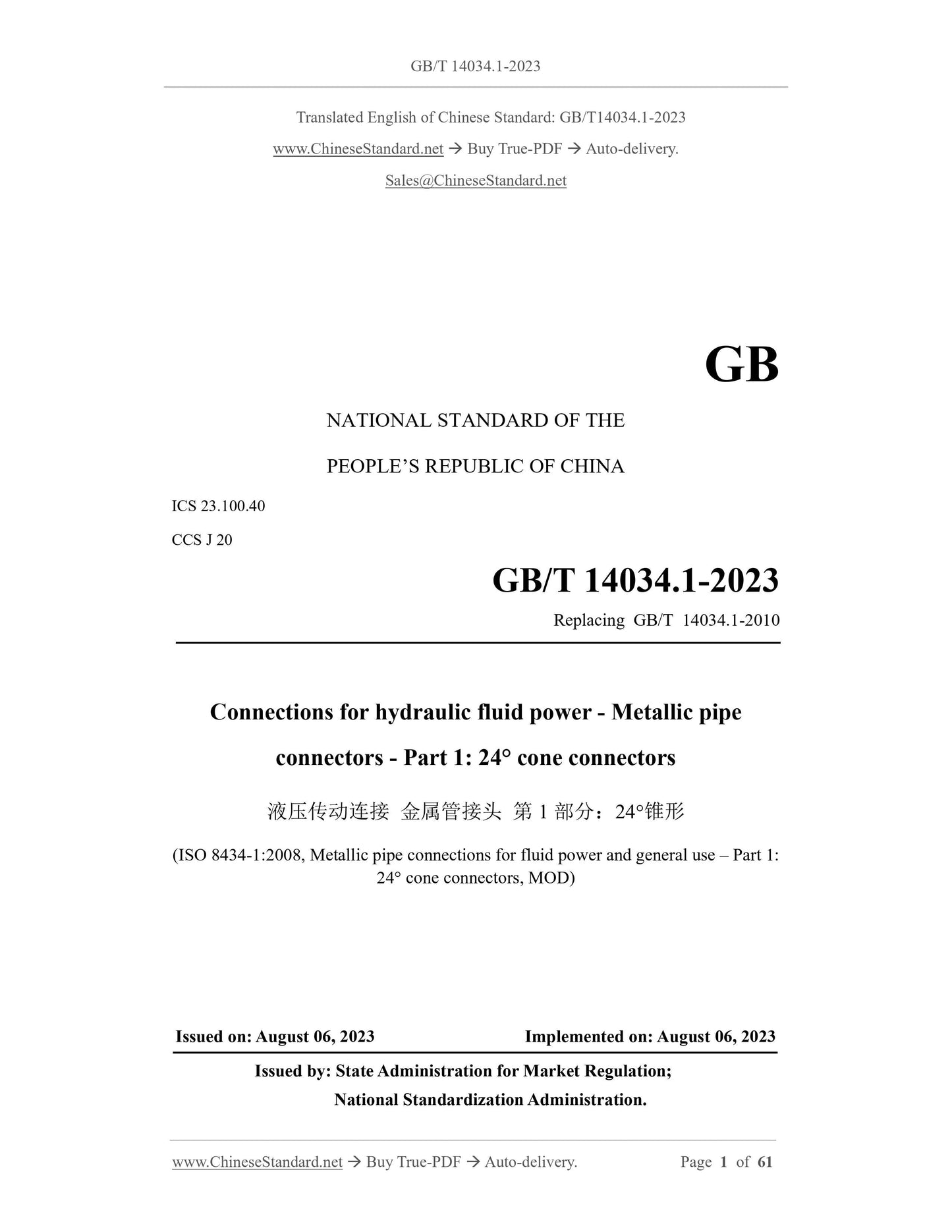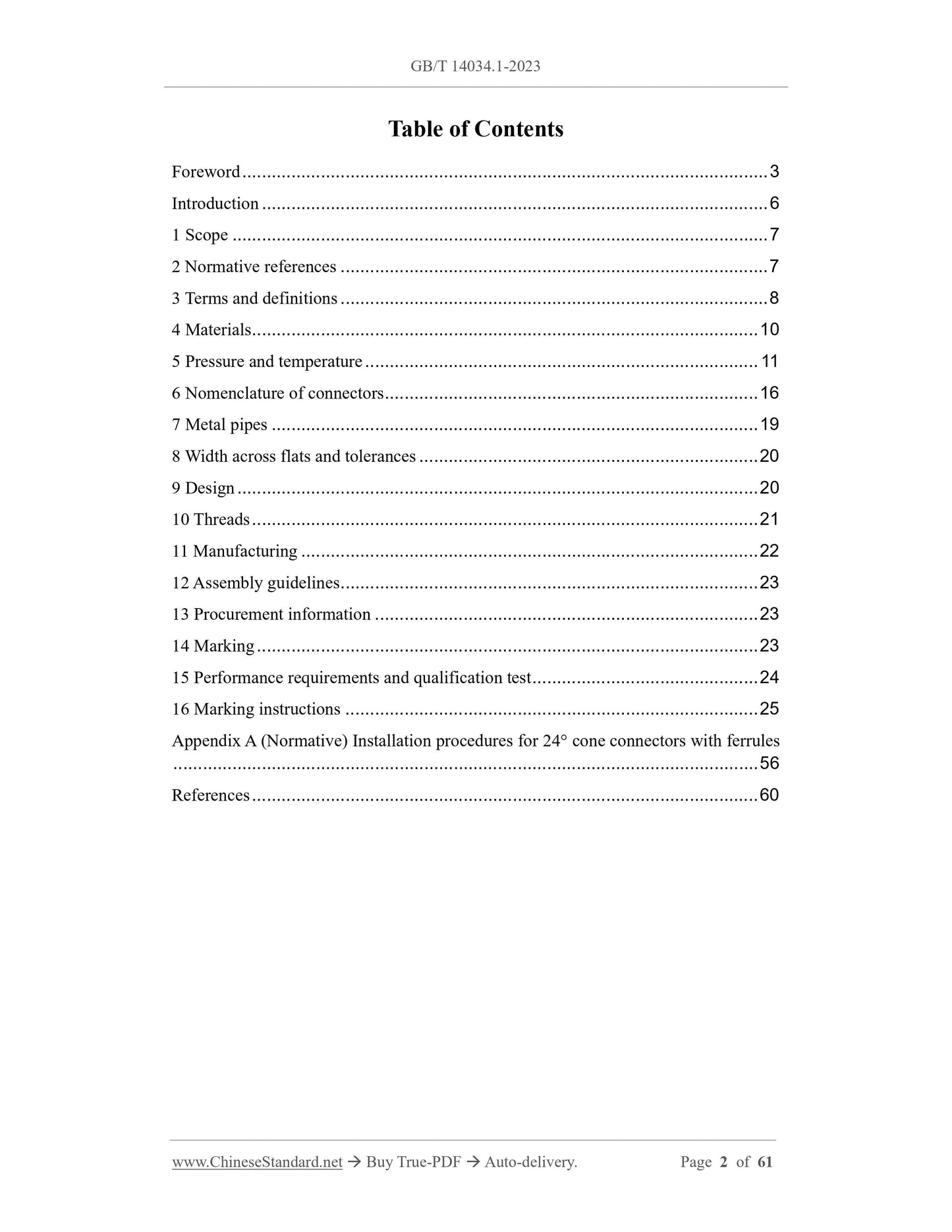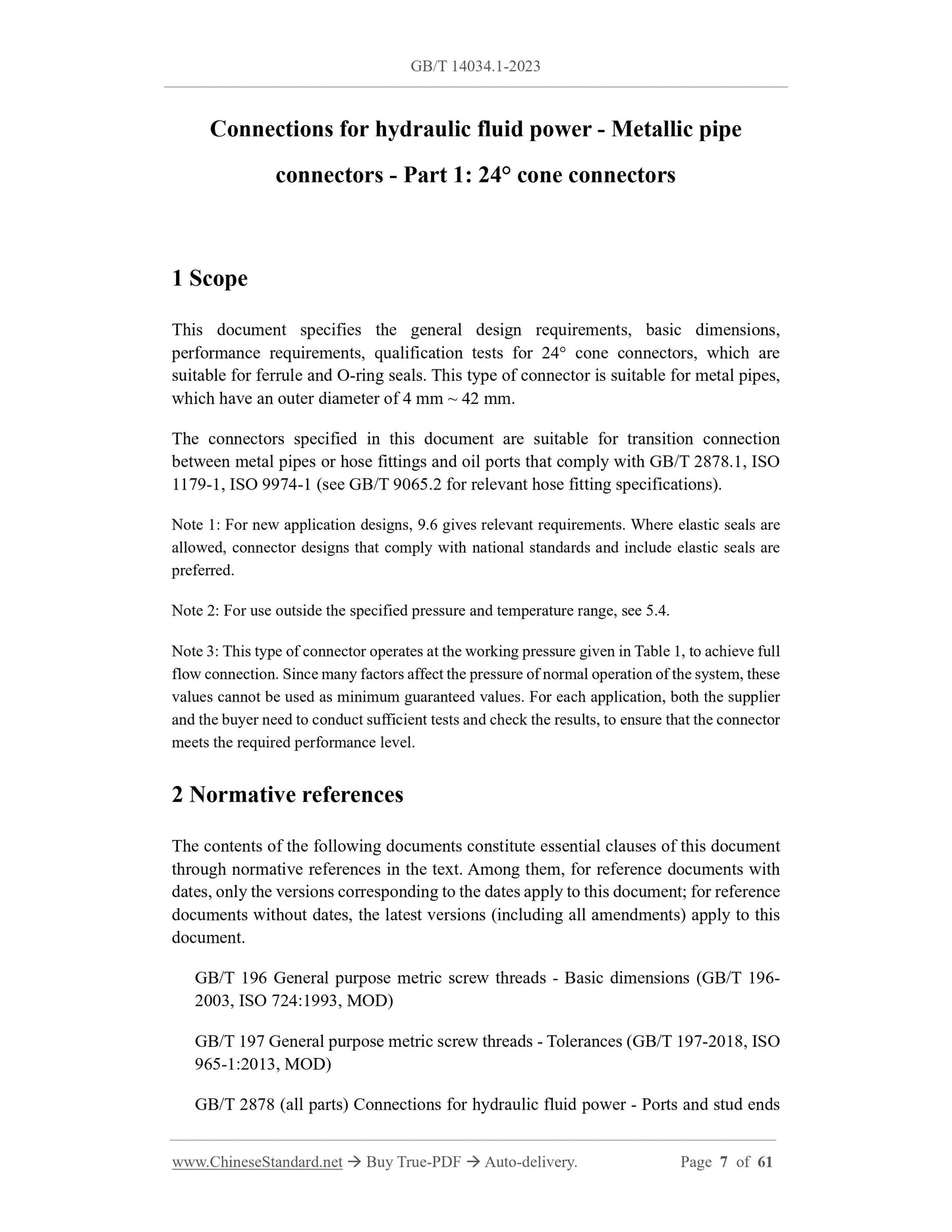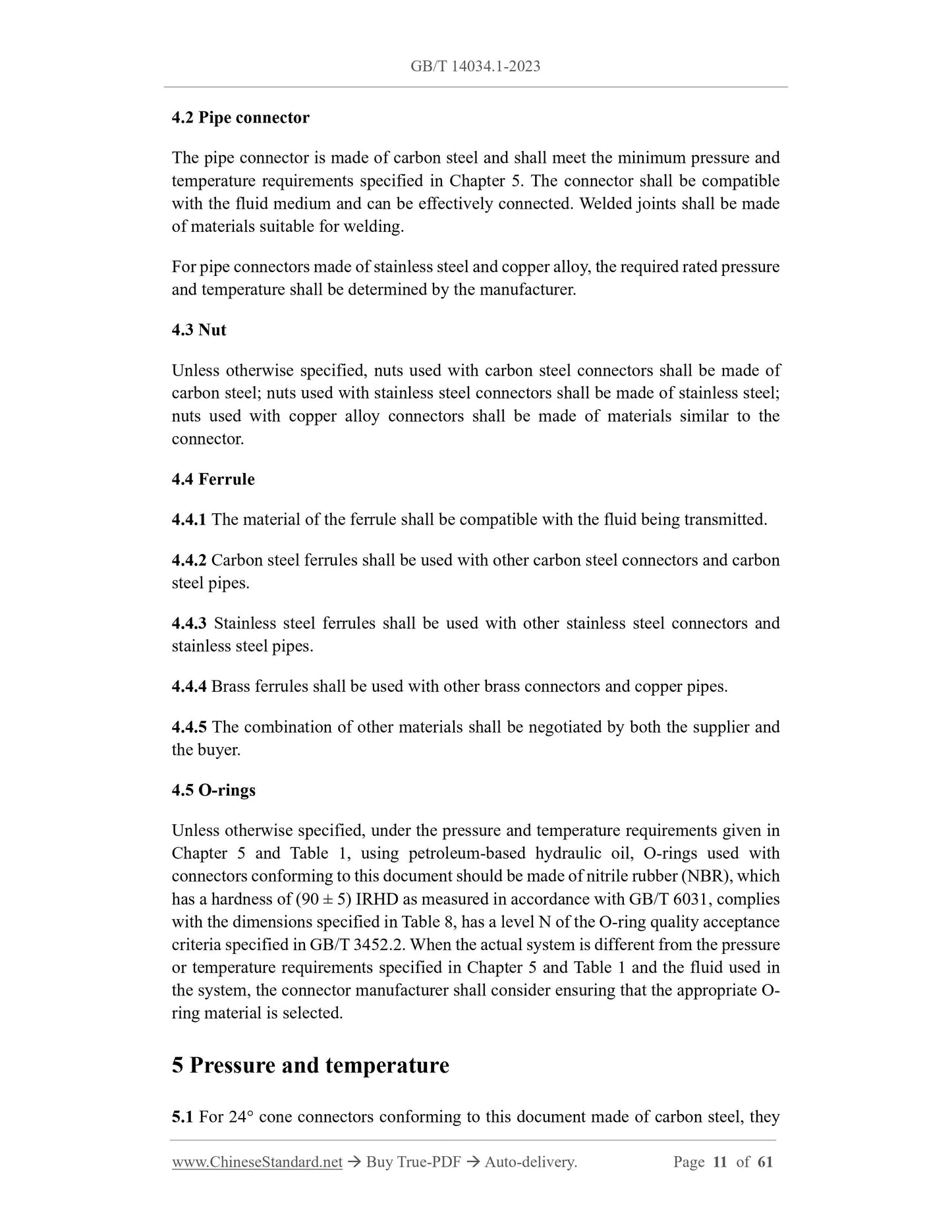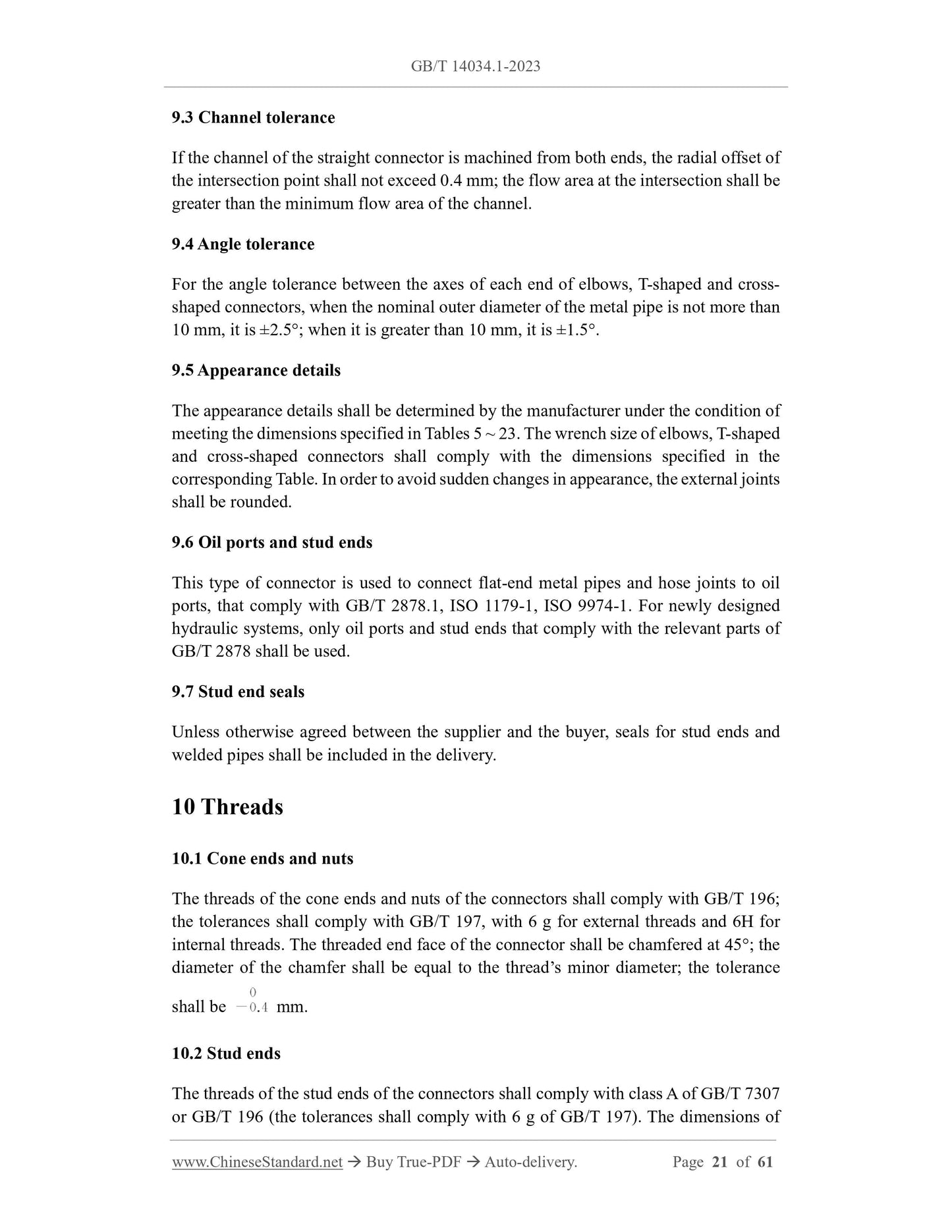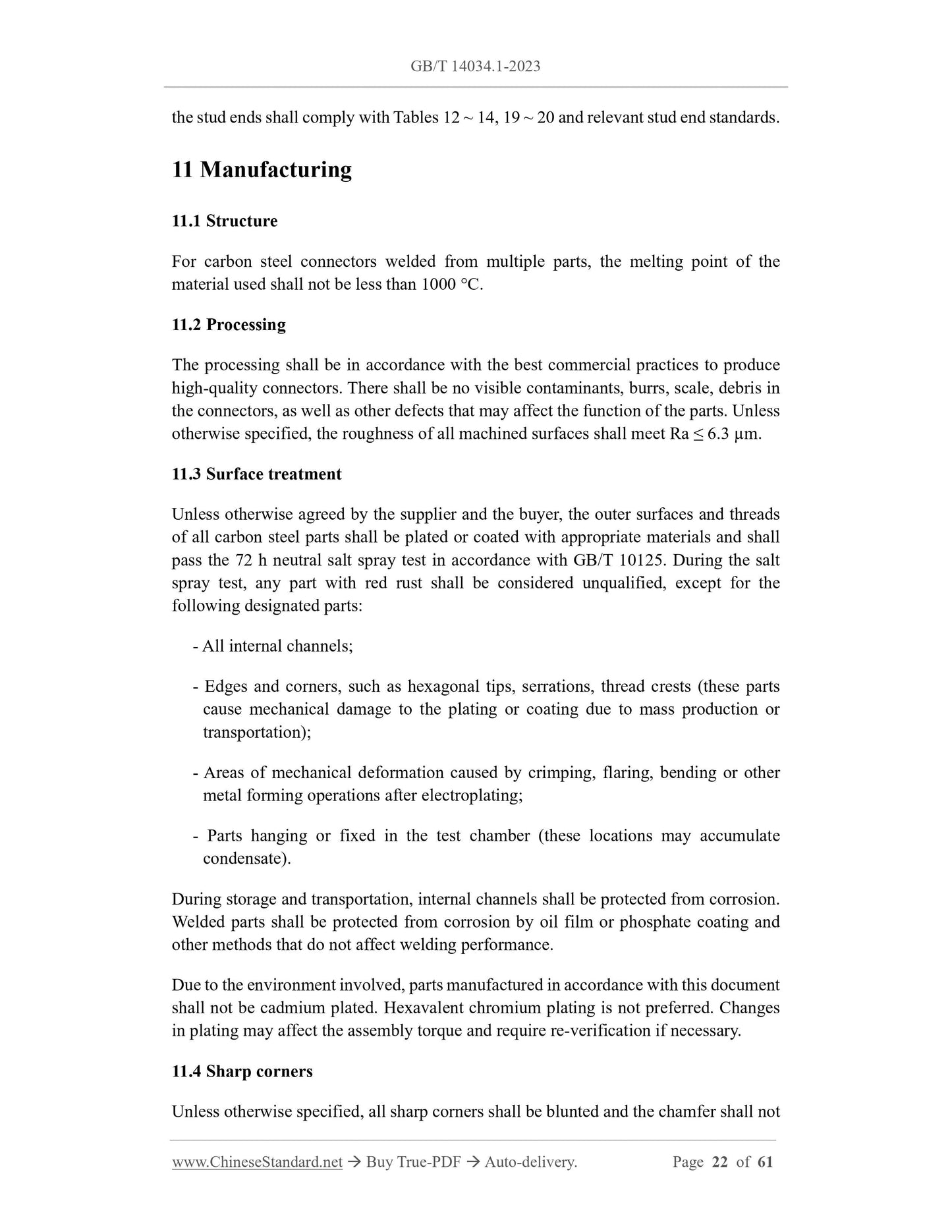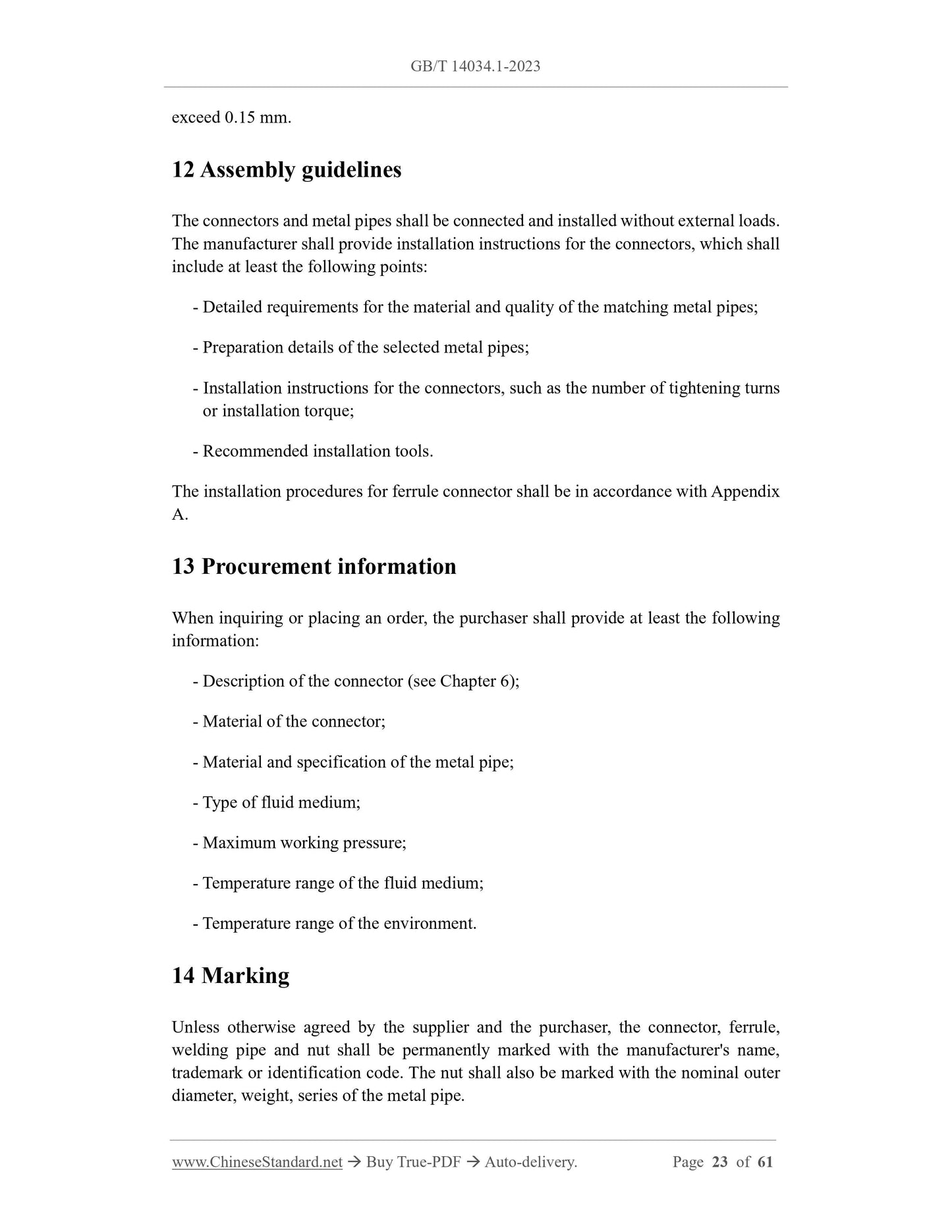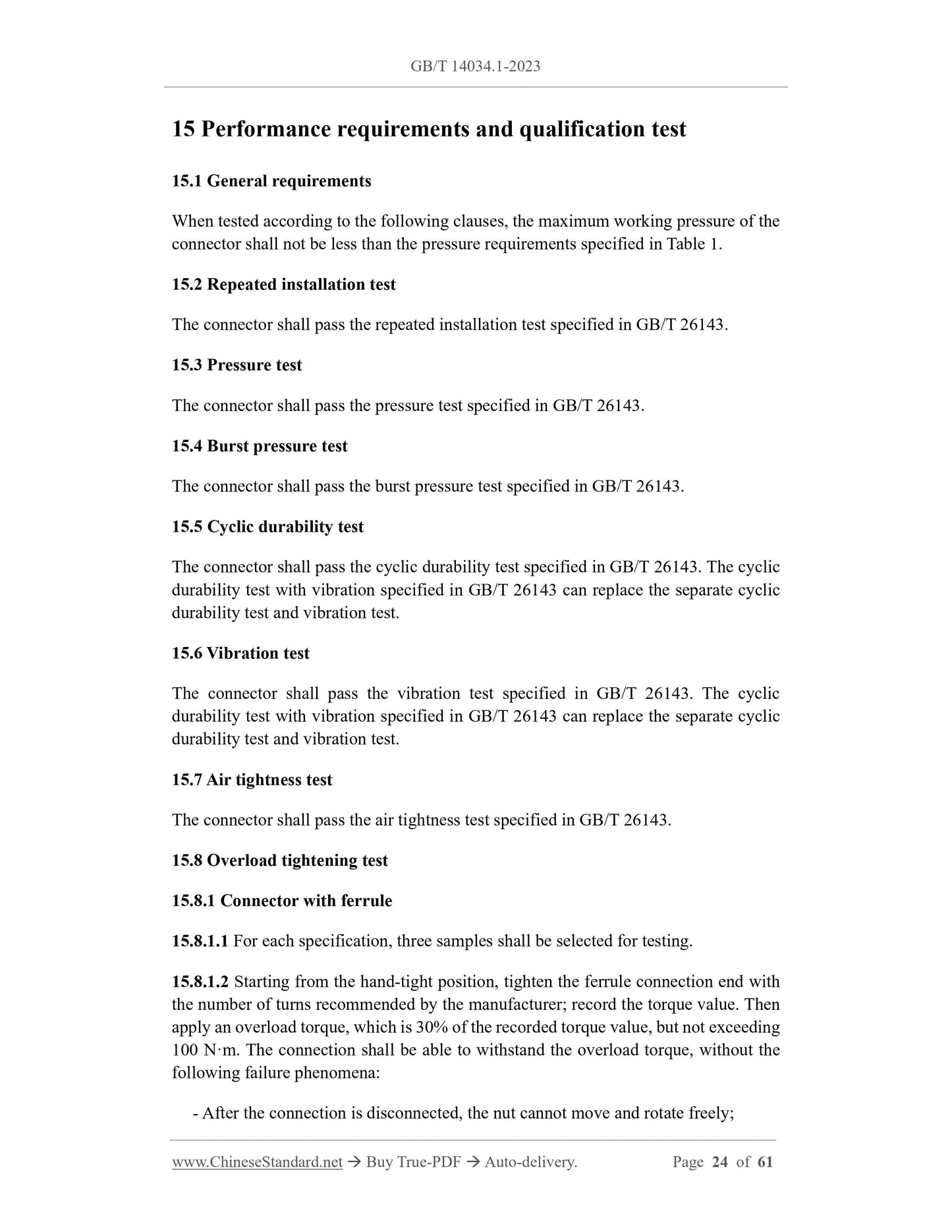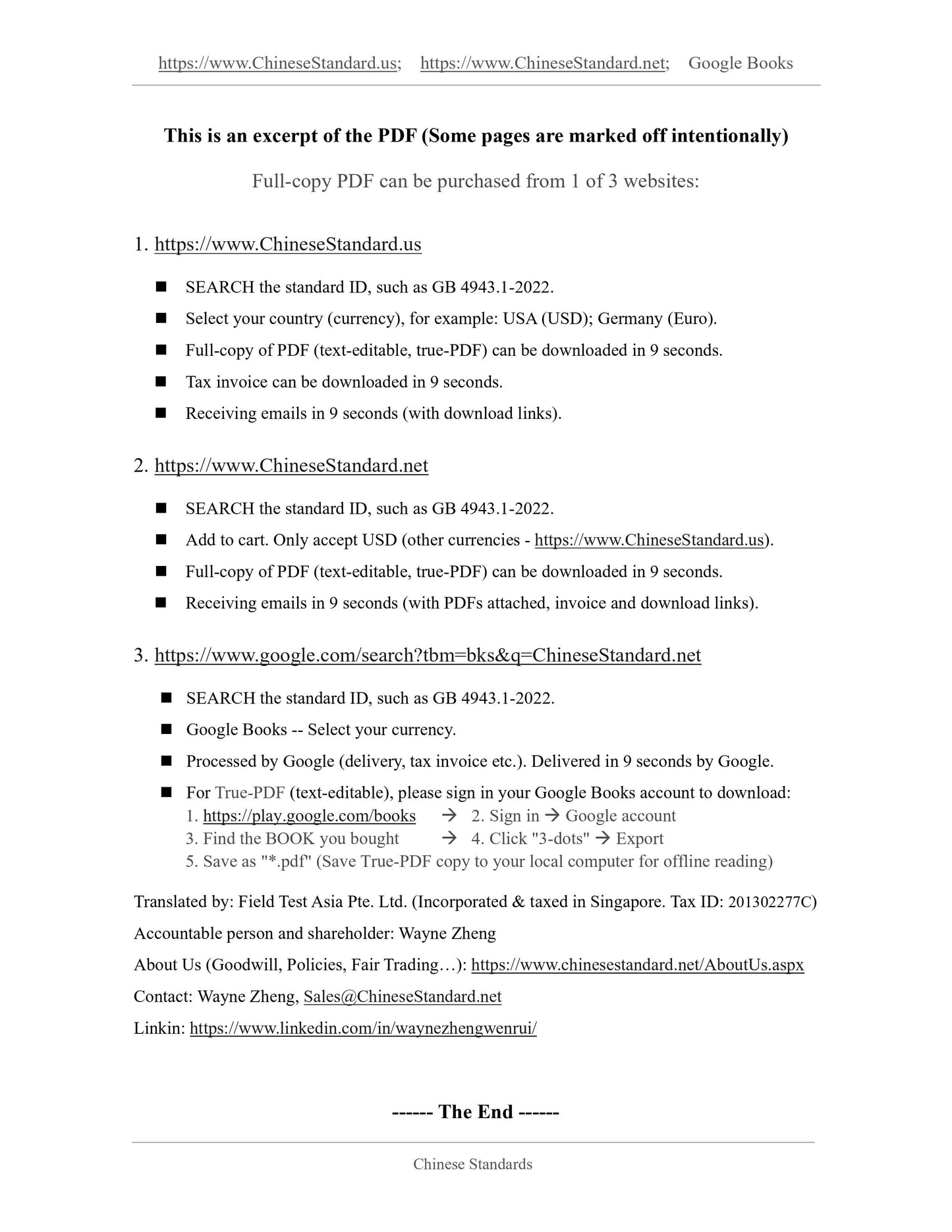1
/
of
9
www.ChineseStandard.us -- Field Test Asia Pte. Ltd.
GB/T 14034.1-2023 English PDF (GB/T14034.1-2023)
GB/T 14034.1-2023 English PDF (GB/T14034.1-2023)
Regular price
$670.00
Regular price
Sale price
$670.00
Unit price
/
per
Shipping calculated at checkout.
Couldn't load pickup availability
GB/T 14034.1-2023: Connections for hydraulic fluid power - Metallic tube connectors - Part 1: 24° cone connectors
Delivery: 9 seconds. Download (and Email) true-PDF + Invoice.Get Quotation: Click GB/T 14034.1-2023 (Self-service in 1-minute)
Newer / historical versions: GB/T 14034.1-2023
Preview True-PDF
Scope
This document specifies the general design requirements, basic dimensions,performance requirements, qualification tests for 24° cone connectors, which are
suitable for ferrule and O-ring seals. This type of connector is suitable for metal pipes,
which have an outer diameter of 4 mm ~ 42 mm.
Basic Data
| Standard ID | GB/T 14034.1-2023 (GB/T14034.1-2023) |
| Description (Translated English) | Connections for hydraulic fluid power - Metallic tube connectors - Part 1: 24�� cone connectors |
| Sector / Industry | National Standard (Recommended) |
| Classification of Chinese Standard | J20 |
| Classification of International Standard | 23.100.40 |
| Word Count Estimation | 54,574 |
| Date of Issue | 2023-08-06 |
| Date of Implementation | 2023-08-06 |
| Older Standard (superseded by this standard) | GB/T 14034.1-2010 |
| Issuing agency(ies) | State Administration for Market Regulation, China National Standardization Administration |
Share
